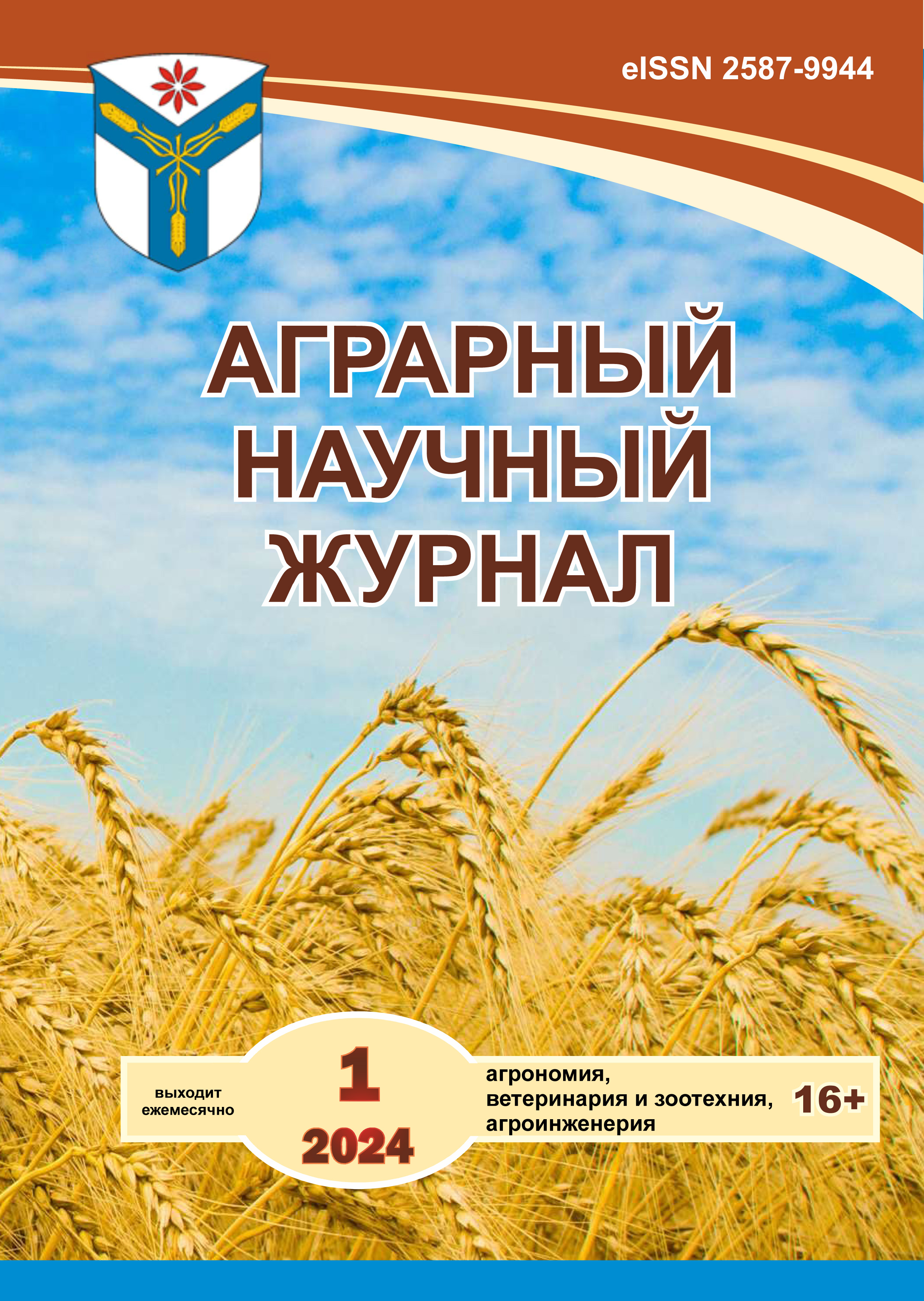Study and practical use of bioresources of citrus crops collection
DOI:
https://doi.org/10.28983/asj.y2024i1pp17-23Keywords:
genus Citrus L., collection, study, sources, selection, hybrid, formAbstract
The article analyzes the collection of citrus crops of the Federal Research Center "Subtropical Scientific Center of the Russian Academy of Sciences" (FITC SNC RAS) in Sochi. The bioresource collection is kept alive in the field and in a container culture for varieties; the collection is represented by the genetic and ecological-geographical diversity of C. reticulate Blan varieties. var unshiu.Tan., C. limon Burm., C. sinensis Osb., C. paradisi Macf., C. maxima Burm., C. medica L. and other species and relatives introduced from Japan, America, China, Italy, Spain, Nicaragua, Abkhazia. The collection is constantly updated with both introducers and new varieties and promising hybrids bred in the Center. Lemon and tangerine groups are widely represented. 19 sources of economically valuable traits that are included in the breeding process have been identified and described from the collection. Citrus reticulata Blanco is of great importance for the humid subtropics of Russia as the most winter-hardy species. Breeding work is being carried out, which is aimed at breeding early-maturing, short-term, stunted forms of mandarin. Ten varieties of mandarin have been created: Sochi 23, Pioneer 80, Krasnodar, Sugar, Black Sea, Millennium 1, Millennium 2, it is most adapted to extreme growing conditions. Because of hybridization, 21 promising forms of mandarin were identified, which are of interest for further breeding work. Large-fruited hybrids 98-1; 99-2; 99-4 were noted, the average yield of which was 3.4 kg /day, these forms are late-ripening (II decade of November). Forms 2-2; 01-4; 01-04; 97-3; 2-5; 2-5 they are characterized by early maturity (II decade of October), stunting and stable yields of 2.6 and 3.0 kg/day. Samples for ornamental gardening are presented: C. ? bergamia, C. ? bergamia var. Melarosa, S. Lemon "Del Brasil", C. ? limetta, C. ? limonelloides, C. verrucosa Tan., C. hystrix DC., as well as two forms:202 (Fortunella margarita?C. reticulata); 78 (Fortunella Margarita?C. reticulata).
Downloads
References
Коллекции субтропических плодовых, орехоплодных (кроме Juglans и Corylus), масличных и пряно-вкусовых растений Российской Федерации, Республики Абхазия и Республики Беларусь / А.В. Рындин [и др.]. Сочи: ВНИИЦиСК, 2019. 167 с.
Кулян Р.В. Хозяйственно-биологическая характеристика новых перспективных форм мандарина (Citrus reticulata Blan.var. unchiu Tan.) // Аграрный научный журнал. 2019. № 8. С. 24–28. doi.org/10.28983/asj.y2019i8pp24-28.
Рындин А. В., Кулян Р. В. Коллекция цитрусовых культур во влажных субтропиках России // Садоводство и виноградарство. 2016. № 5. С. 24-30. DOI: 10.18454/VSTISP.2016.5.3445.
Ayba L.Ya., Karpun N.N., Kulava L.D., Shoshina E.I., Sabekia D.A. Resistance of citrus crops in Abkhazia to damage by the woolly whitefly Aleurothrixus floccosus (Maskell) // IOP Conference Series: Earth and Environmental Science. 2021; 723 doi:10.1088/1755-1315/723/2/022057.
Deng X, Yang X, Yamamoto M, Biswas M. K. Domestication and history. The Genus Citrus Ed. Talon, M., Caruso, M., Gmitter, F.G (Woodhead Publishing Elsevier; Duxford, UK). 2020; P. 33-55.
Dzyubenko N. I. Vavilov's Collection of Worldwide Crop Genetic Resources in the 21st Century. Biopreserv Biobank. 2018; 16 (5) p 377-83. DOI: 10.1089/bio.2018.0045.
Mitsuo Omura, Takehiko Shimada Citrus breeding, genetics and genomics in Japan. Breeding Science. 2016;66 (1);3-17. DOI: 10.1270/jsbbs.66.3.
Ryutaro T, Zhengrong L. The Persimmon Genome (Pub.Springer Nature). 2022:176. DOI:10.1007/978-3-031-05584-3.
Solberg S. O, Loskutov I. G, Breian L, Diederichsen A The Impact of N.I. Vavilov on the Conservation and Use of Plant Genetic Resources in Scandinavia // Plants. 2022;12(1):143. doi: 10.3390/plants12010143
Terol J, Conesa A, Colmenero J. M, Cercos M, Tadeo F, Agust? J, Alos E., Andres F., Soler G., Brumos J., Iglesias D. J., Gotz S., Legaz F., Argout X., Courtois B, Ollitrault P, Dossat C, Wincker P, Morillon R. and Talon M. Analysis of 13000 unique Citrus clusters associated with fruit quality, production and salinity tolerance // BMC Genomics. 2007; 8(31):22. doi:10.1186/1471-2164-8-31.
Volk G, Gmitter Jr G, Krueger R. Conserving Citrus Diversity: From Vavilov's Early Explorations to Genebanks around the World Plants. 2023;12(4):814. DOI: 10.3390/plants12040814.
Volk G, Samarina L, Kulyan R, Gorshkov V, Malyarovskaya V, Ryndin A, Polek M, Krueger R, Stover E. Citrus genebank collections: international collaboration opportunities between the U.S. and Russia Genetic Resources and Crop Evolution. 2018;(65):433–47. Available at: https://doi.org/10.1007/s10722-017-0543ю
Westengen O. T, Jeppson S, Guarino L. Global ex-situ crop diversity conservation and the Svalbard Global Seed Vault: assessing the current status // PLoS ONE. 2013;(8):e64146 doi: 10.1371/journal.pone.0064146.
Yesiloglu T, Cimen B, Incesu M, Yilmaz B. Genetic Diversity and Breeding of Persimmon. Breeding and Health Benefits of Fruit and Nut Crop R. Jaya, Soneji, Madhugiri Nageswara-Rao. Intech Open. 2018:21-46. DOI: 10.5772/intechopen.74977.
Downloads
Published
Issue
Section
License
Copyright (c) 2024 Agrarian Scientific Journal

This work is licensed under a Creative Commons Attribution-NonCommercial-NoDerivatives 4.0 International License.








